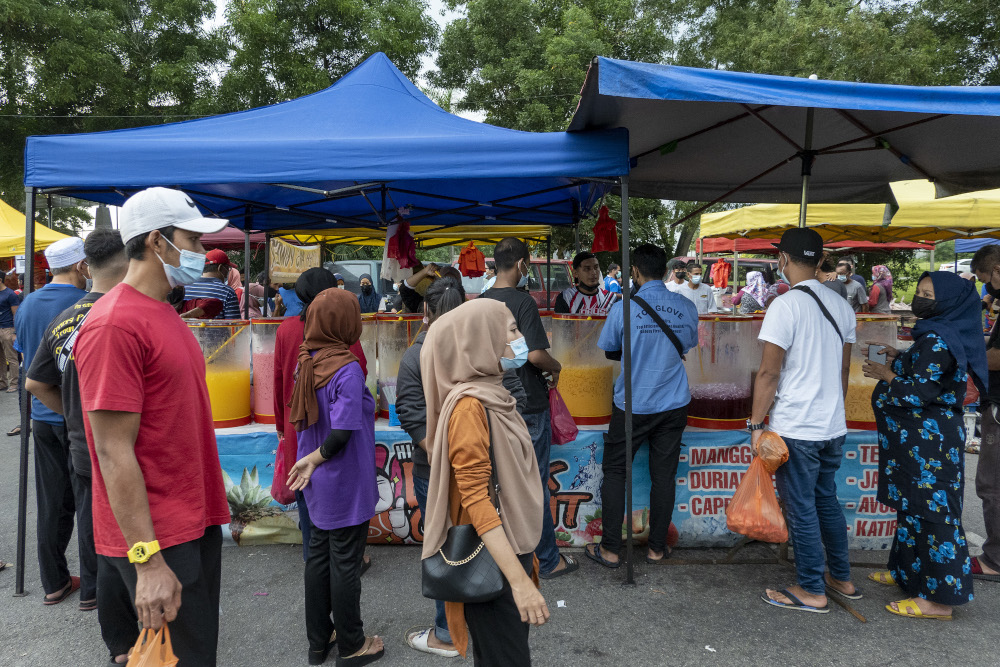MAY 5 — On December 22 last year, with Christmas and New Year holidays approaching, South Korea's capital Seoul and its surrounding areas banned gatherings of more than four people (rule of 4) as the country recorded its highest daily death toll from Covid-19 the day before (Dec 21).
The number of Covid-19 cases had broken the 50,000 mark, with 926 new cases and 24 new fatalities adding to the number of cases to over 50,000 and the death toll of 698, just 2 short of the 700 mark.
Announcing the restriction, then acting Seoul Mayor Seo Jung-hyup said: "We cannot overcome the current crisis without reducing cluster infections that are spreading through private gatherings with families, friends and colleagues."
“Private gathering” referred to any gathering for the purpose of socializing. These include gatherings among friends, year-end parties, New Year’s parties, workshops, housewarming parties and office dinners, among others. http://www.koreaherald.com/view.php?ud=20201222000855
The restriction was expanded – into the new year and until January 17 – to the whole country because, as explained by the health minister, as much as 40 per cent of the country’s recent cases had been linked to small gatherings.
Although elsewhere the percentage is not as high as 40, it is the small gatherings in household settings that are fueling the Covid-19 surge. Gatherings like thanksgiving dinners and reunion dinners. Gatherings with family and friends who do not live in the same household. These are gatherings that can increase the chances of getting or spreading Covid-19.
Like it or not, the safest way to gather is virtually or with the people in the same household. The best advice that any government can give to the people is to avoid indoor gatherings of any kind, especially in smaller rooms that make distancing difficult, if not impossible. That includes traditional family holiday celebrations.
It is worrisome, therefore, that the government is allowing house visits in movement control order (MCO) areas with guests not exceeding 15 persons at any one time (rule of 15). For conditional MCO (CMCO) and recovery MCO (RMCO) areas, visits are allowed from the first to third day of Raya, with the numbers limited to 20 persons at any one time (rule of 20) for CMCO areas, and with the numbers not exceeding 25 persons at any one time for RMCO areas (rule of 25).
After Seoul’s and the whole of country’s rule of 4, daily new cases peaked at 1,237 on Christmas day (Dec 25) before the numbers went sliding down to as low as 303 on February 1, 2021. The rule of 4 and other restrictions must have been effective.
Singapore has just announced tighter measures for about three weeks from May 8 to curb the spread of infection. It will be a tighter rule of 5 instead of the current 8. Households will only be able to receive five distinct visitors per day. Singaporeans have been advised to keep to a maximum of two social gatherings per day, whether it is to visit another household or to meet with friends or family in a public place.
The rule of 5 applies to all social gatherings, including dining at restaurants. https://www.channelnewsasia.com/news/singapore/5-person-rule-covid-19-measures-whats-allowed-testing-14743948
And Singapore's daily new cases? 16 (15 imported, 1 community) https://www.channelnewsasia.com/news/singapore/covid-19-new-cases-moh-ttsh-cluster-community-imported-may-5-14746538
Anytime people from different households get together, the risk of infection increases. So, what’s the science and data for the rule of 15, 20 and 25 for Malaysians?
* This is the personal opinion of the writer and does not necessarily represent the views of Malay Mail.






















